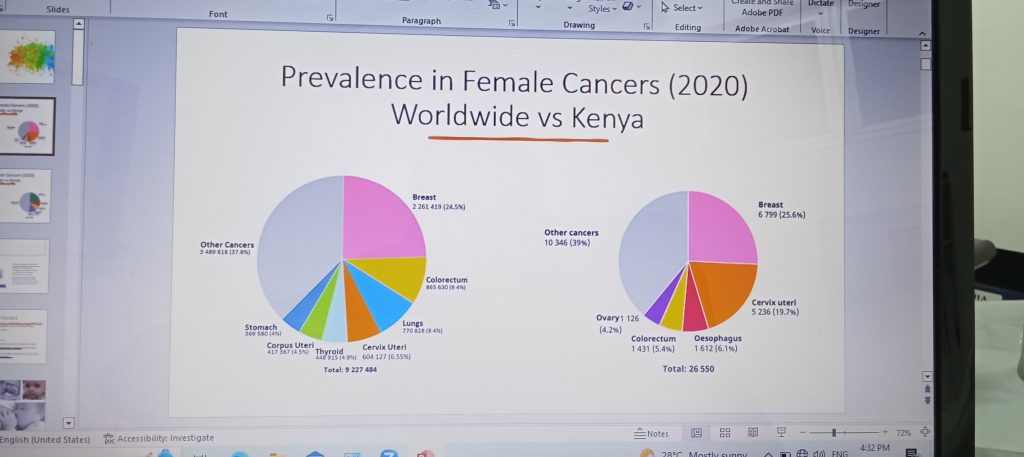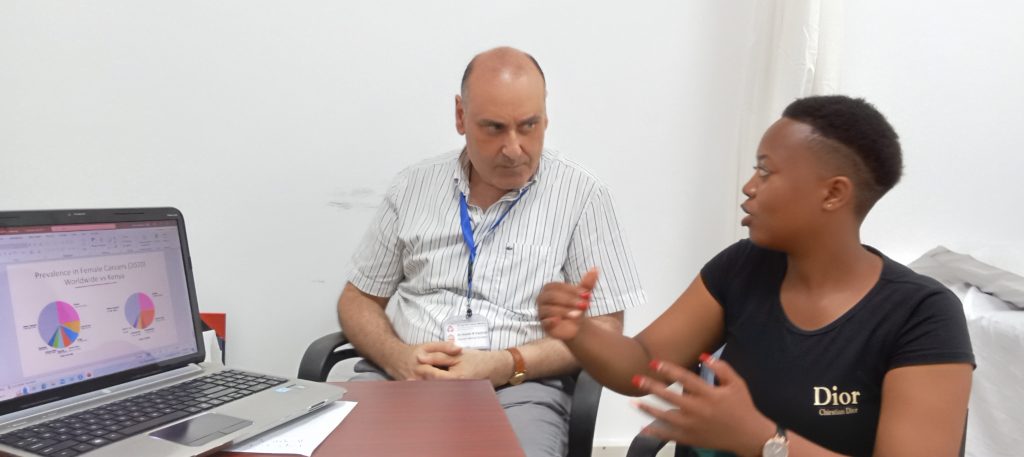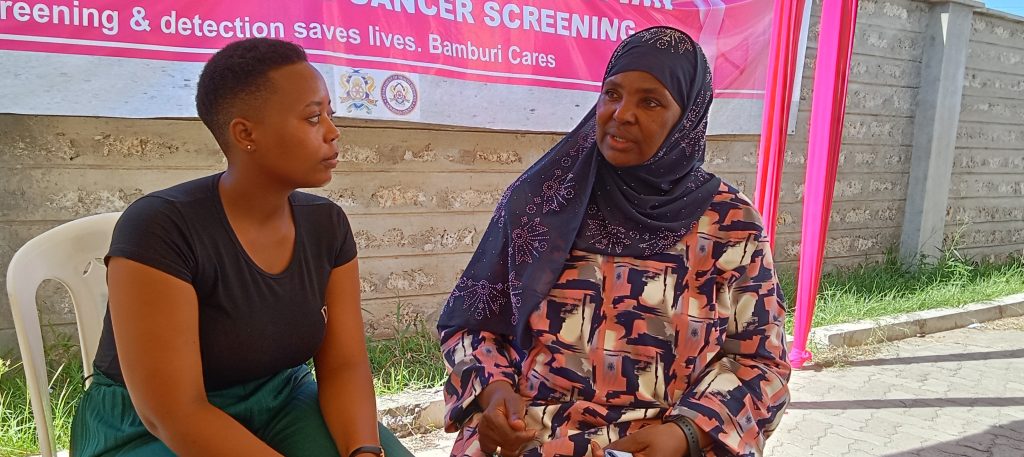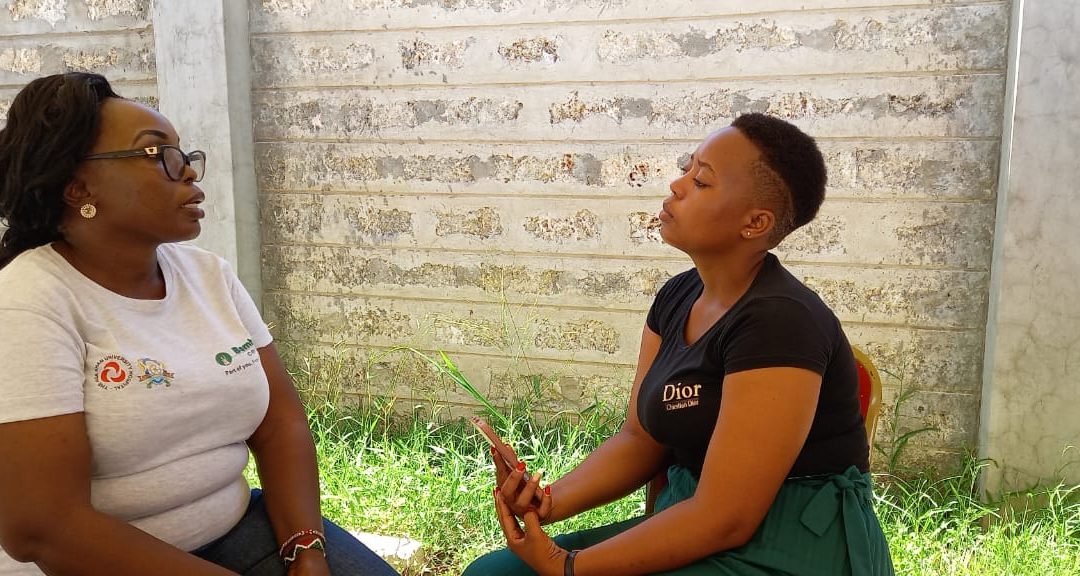By Allan Kai & Mapenzi Kitsao
In 2022, the World Health Organization (WHO) highlighted the alarming impact of breast cancer in Kenya, ranking it as the second leading cause of cancer-related deaths. Shockingly, seven women reportedly succumb to the disease daily, contributing to over 3000 deaths annually. The daily influx of 6799 new cases constituted 12.5% of the total cancer burden, revealing a pressing public health concern.

According to Dr. Hamid Elia Daaboul, MD, PhD, and Head of the Haemato-Oncology Section at Aga Khan Hospital Mombasa, breast cancer is characterized by the abnormal proliferation of mutated cells. This occurs when cells undergo rapid multiplication, leading to DNA changes. While both men and women can be affected, women face a higher risk due to estrogen production. Factors such as early onset of menses and early menopause increase susceptibility.

“Women, in general, face a higher susceptibility to breast cancer due to the production of the hormone estrogen in the body. While it is rare, men can also develop the disease, primarily because they lack this hormone,” he explained. “Moreover, women who experience the onset of menstruation at an earlier age (between 8 and 12 years) and those who enter menopause prematurely are at an elevated risk of developing breast cancer,” he added.
The financial burden of breast cancer treatment poses a significant challenge for patients. Mary Nafula, a cancer survivor, shared her struggle, emphasizing the expenses even after government interventions. The process, from diagnosis to treatment, demands considerable funds, prompting individuals like Nafula to organize fundraising events to cover costs beyond National Hospital Insurance Fund (NHIF) limits.
“Treating cancer is costly; I even went to the extent of organizing fundraising events because I had surpassed my NHIF limit,” said Nafula. “I organized four fundraising events after exceeding my NHIF coverage, but it wasn’t easy, as not all the fundraising events were successful,” she added.

Cancer care accessibility in coastal areas exacerbates financial challenges. Alfrida Matole highlighted her costly experience seeking breast cancer services outside her hometown, Mombasa.
“I underwent radiotherapy in Nairobi, and it was expensive, encompassing costs from transportation to accommodation, with each session of treatment charged Ksh.15,000,” explained Matole.
Nafula, who is also the founder of Warriors of Hope, an organization spreading awareness about breast cancer in Mombasa, pointed out that NHIF primarily covers treatment, leaving diagnosis costs unaddressed. Delays in diagnostic follow-ups due to financial constraints further compound the issue
Aisha Dakala, a Goodwill ambassador, revealed efforts to collaborate with organizations to ease diagnosis costs, citing plans to replicate Nairobi Hospice care in coastal regions. “We are actively seeking partnerships with organizations to help alleviate the costs. Our goal is to replicate Nairobi Hospice care at the coast, ensuring that patients in the region can benefit from these services,” said Dakala.
Furthermore, Dakala through sensitization campaigns, has outlined initiatives to mobilize communities for NHIF registration, emphasizing its role in cost reduction.
“Although NHIF coverage doesn’t extend to diagnosis, it’s advisable to register for it as it assists in reducing costs elsewhere. However, there is a significant gap in terms of expenses, and I would urge the government to intervene. To comprehensively address breast cancer, we must encompass both diagnosis and treatment,” she emphasized.

Despite progress, breast cancer education and awareness remain unevenly distributed. Matole underscored the urban-rural information gap, urging the government to disseminate information more broadly. Ignorance persists as a barrier to awareness, with survivors like Mary Nafula striving to overcome stereotypes and educate communities.
“I have faced numerous challenges in this process, primarily from misconceptions. Organizing talks with men is no easy task. Many hold the belief that men do not get breast cancer, and the fact that I am a woman often leads to being dismissed,” Dakala explained.
Nafula proudly details her accomplishments in promoting awareness in specific areas of Mombasa. She notes that the community is eager to access such information. “People actively seek more of this information, and we’ve received positive feedback from them upon acquisition. As of October 2023, we have successfully registered over 2048 individuals. Some are currently undergoing diagnosis, and we maintain consistent follow-ups, including those already affected,” Nafula shared.
Dr. Daaboul emphasized the need for precaution against lifestyle factors like drug and alcohol use, potentially contributing to rising breast cancer cases. He emphasized NHIF registration as a vital step for comprehensive health coverage.
Historically, accessibility to breast cancer services in Kenya posed challenges, contributing to delayed results and further disease spread. In response, the Mombasa County Government, in collaboration with Bamburi Cement, established the Coast General Cancer Center, offering radiotherapy and comprehensive cancer services.
Addressing the escalating breast cancer cases in Kenya requires a multifaceted approach. Efforts should focus on increasing awareness in urban and rural settings, reducing financial barriers to diagnosis and treatment, and expanding cancer care facilities countrywide. The collective action of survivors, advocates, and policymakers is crucial in restoring hope and combating the trauma associated with breast cancer.

